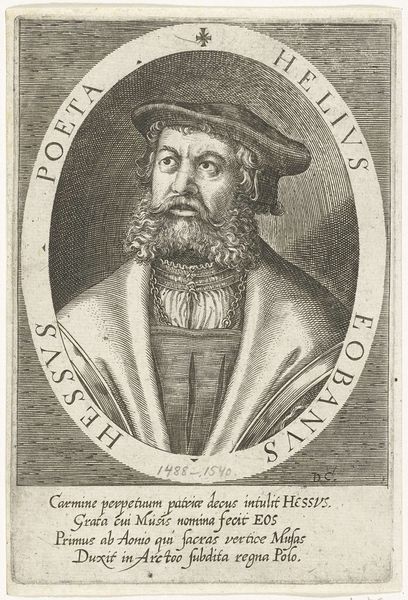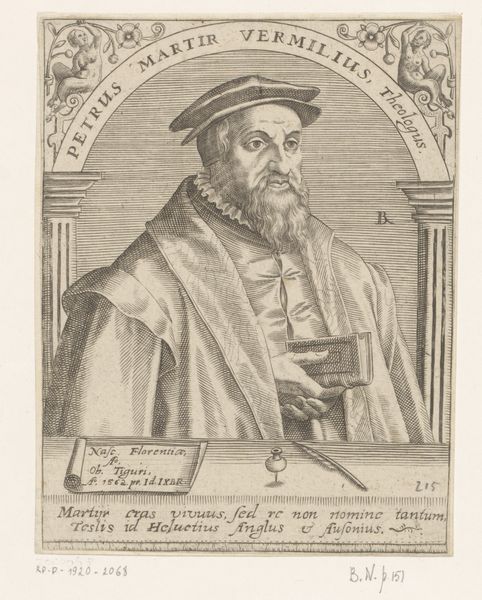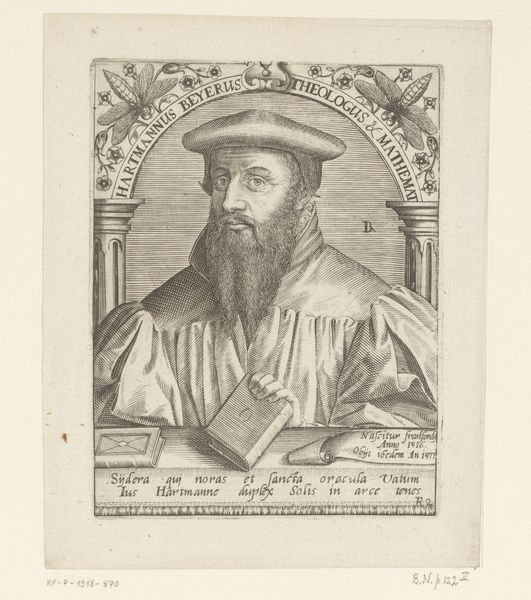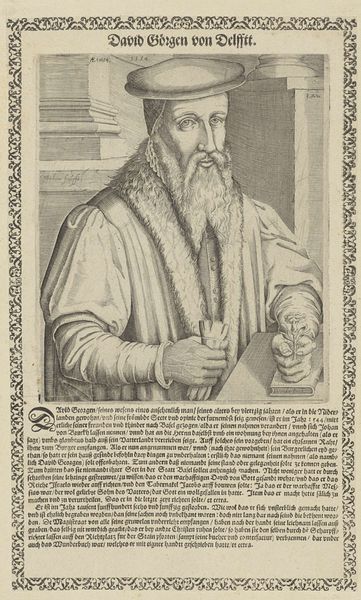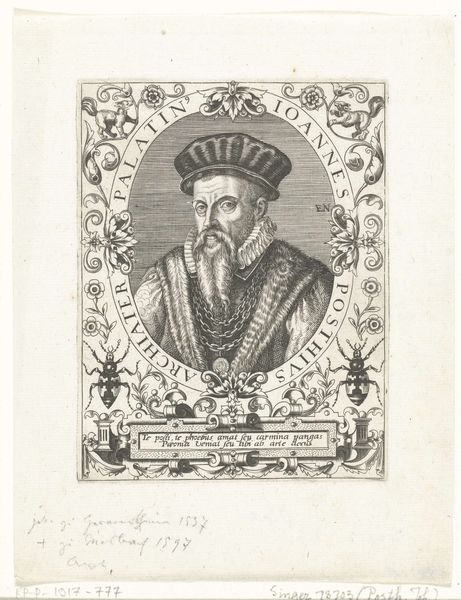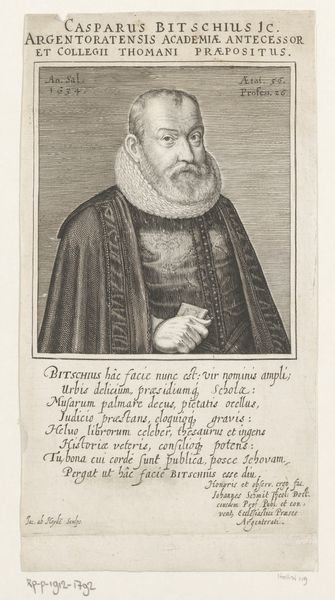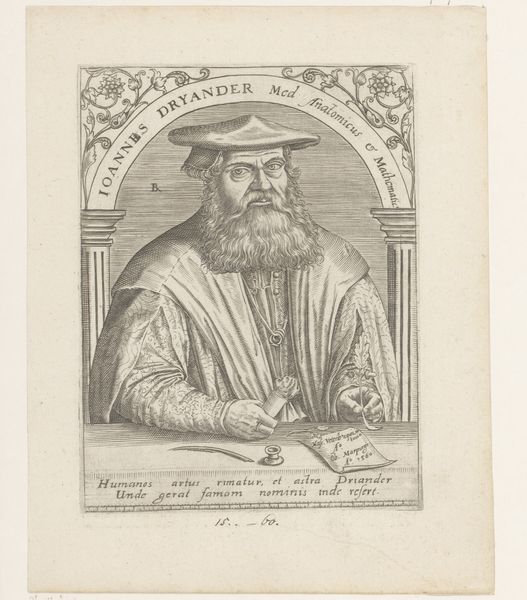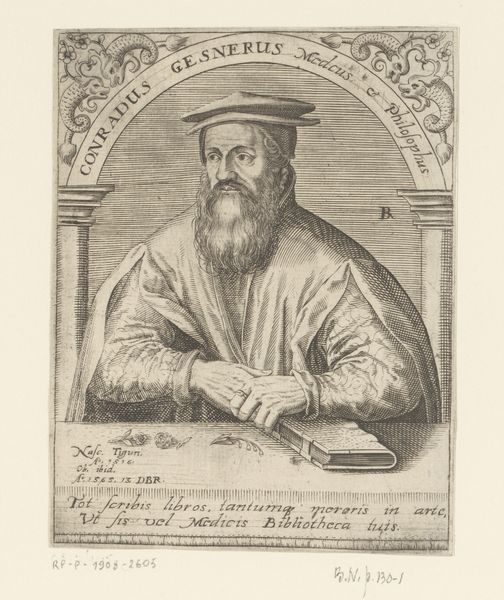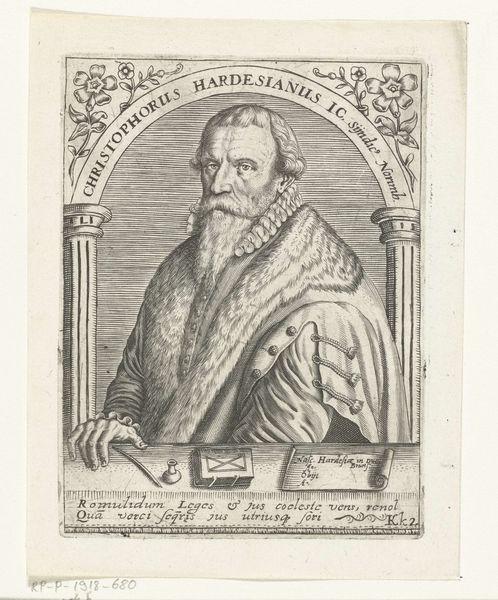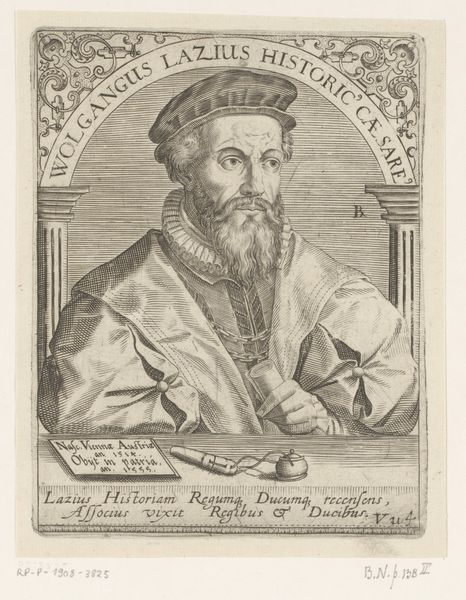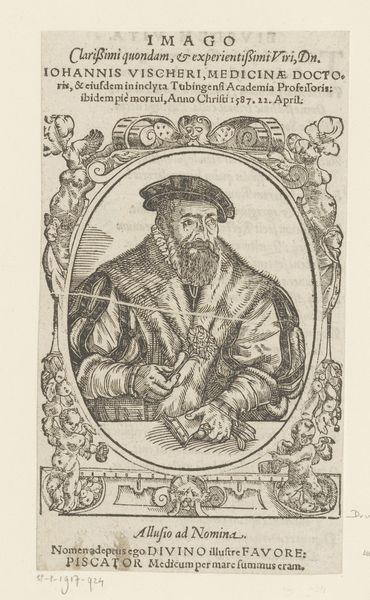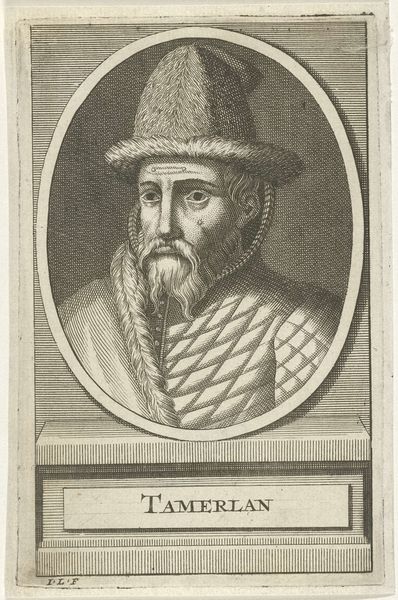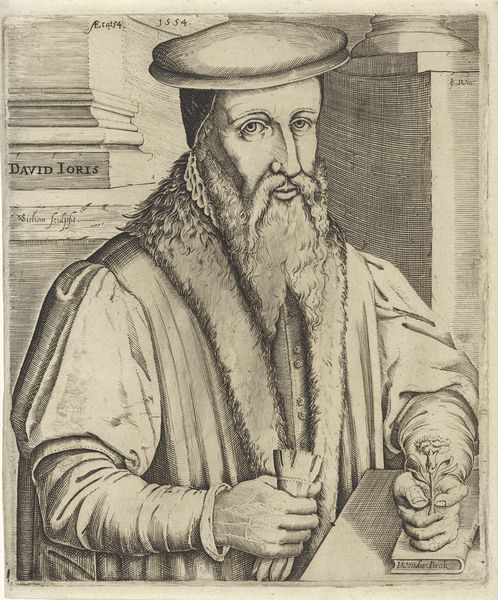
print, engraving
#
portrait
#
baroque
# print
#
old engraving style
#
personal sketchbook
#
portrait drawing
#
engraving
Dimensions: height 140 mm, width 100 mm
Copyright: Rijks Museum: Open Domain
Curator: This is a portrait of Gilbert Fuchs, or Gilbertus Limburgius Medicus as inscribed on the engraving, attributed to Theodor de Bry, made sometime between 1597 and 1669. Editor: It strikes me immediately as having a scholarly, almost melancholic air, fitting for the Baroque era. The stark black and white intensifies that somber mood. Curator: The visual language certainly communicates status and learning. His fur-lined robe, the book he's holding…they all point to his position as a man of medicine and intellectual importance in his time. It uses a vocabulary accessible to a 17th century audience, emphasizing established values and power structures. Editor: Note also the tight, precise lines achieved through engraving. The artist used hatching to build up the forms, to articulate shadows that suggest depth. I find this intricacy both mesmerizing and slightly austere. It's less about spontaneous expression and more about meticulous rendering. Curator: And don’t overlook the bees flanking the title. Bees often symbolized diligence and industriousness—virtues especially valued in fields of study, suggesting Gilbert Fuchs' commitment to his practice as a physician. Even more broadly, the bee is a figure of collective labour within a tightly hierarchical social structure...rather like early modern medicine itself. Editor: Yes, I see how these subtle elements enrich the portrait’s meaning. If one sees his attire in relation to these symbolic details it seems like his professional image becomes more layered and profound, so beyond the simply representational. It's less about how well de Bry captured the person's likeness and more how well he composed the work, as such. Curator: And this helps us see the enduring human quest for meaning within the symbols and representations we create. Gilbert Fuchs becomes a vehicle for these symbols and a continuation of memory of past generations and associations. Editor: Seeing those visual motifs interpreted through the lens of symbolism invites us to pause and decode those conventions embedded in visual culture from the 17th century. I am walking away with new thoughts about printmaking practices of this period.
Comments
No comments
Be the first to comment and join the conversation on the ultimate creative platform.
